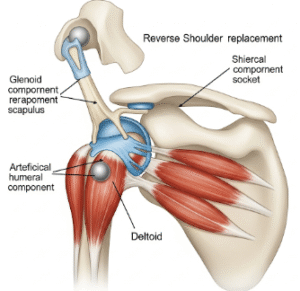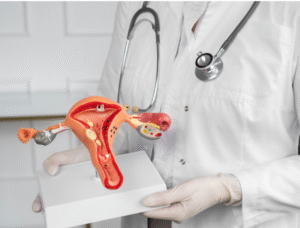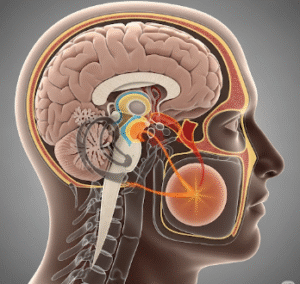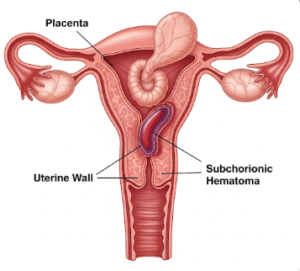Overview
Botulism is a rare but potentially life-threatening illness caused by botulinum toxin, produced by the bacterium Clostridium botulinum. This neurotoxin blocks nerve function, leading to muscle paralysis that can affect breathing and other vital functions. Botulism can occur in several forms, including foodborne, wound, infant, and iatrogenic botulism.
In Korea, botulism is treated in infectious disease and critical care units. Korean healthcare emphasizes early detection, antitoxin administration, and intensive supportive care. With timely medical intervention, most patients recover, although severe cases may require prolonged hospitalization.
What is Botulism?
Botulism is caused by exposure to botulinum toxin, one of the most potent toxins known. The toxin interferes with neuromuscular transmission, preventing muscles from contracting and causing progressive paralysis.
Forms of botulism include:
- Foodborne botulism: Ingestion of contaminated food, often improperly canned or preserved
- Wound botulism: Infection of wounds by C. botulinum producing toxin in situ
- Infant botulism: Colonization of the infant gut by C. botulinum spores
- Iatrogenic botulism: Rare, resulting from overdose of botulinum toxin used therapeutically
Botulism does not spread person-to-person, but early recognition is critical to prevent severe complications and death.
Symptoms
Symptoms depend on the type of botulism and the amount of toxin exposure:
Foodborne botulism:
- Double or blurred vision
- Drooping eyelids (ptosis)
- Difficulty swallowing or speaking
- Dry mouth
- Muscle weakness starting in the face and spreading downward
- Nausea, vomiting, and abdominal discomfort in some cases
Wound botulism:
- Weakness near the infected area
- Fever may be present
- Paralysis similar to foodborne type but without gastrointestinal symptoms
Infant botulism:
- Constipation
- Poor feeding
- Weak cry
- Floppiness (hypotonia)
- Weak facial expression and decreased movement
Advanced botulism:
- Paralysis spreads to the arms, legs, and respiratory muscles
- Breathing difficulties requiring mechanical ventilation
- In severe untreated cases, death may occur due to respiratory failure
Causes
Botulism is caused by botulinum neurotoxins produced by Clostridium botulinum:
- Foodborne causes: Improperly canned or preserved foods, fermented seafood, and home-canned vegetables
- Wound infection: Deep or contaminated wounds, including intravenous drug use
- Infant causes: Honey, unpasteurized foods, or environmental spores colonizing the gut
- Medical causes: Excessive use of botulinum toxin injections in cosmetic or therapeutic procedures
The toxin blocks acetylcholine release at neuromuscular junctions, preventing muscles from contracting and causing paralysis.
Risk Factors
- Home-canned or preserved foods without proper sterilization
- Wounds contaminated with soil or foreign material
- Infants under one year due to immature gut flora
- Intravenous drug users (risk of wound botulism)
- Excessive therapeutic or cosmetic botulinum injections
- Immune-compromised individuals may be more susceptible to severe disease
Complications
If untreated, botulism can lead to life-threatening complications:
- Respiratory failure due to paralysis of breathing muscles
- Aspiration pneumonia from swallowing difficulties
- Long-term weakness or fatigue even after recovery
- Hospital-acquired infections during prolonged hospitalization
- Death in severe untreated cases, particularly foodborne and wound botulism
- Secondary complications in infants including poor growth and developmental delays
Prevention
Prevention strategies focus on food safety, wound care, and careful medical use of botulinum toxin:
- Proper canning and food preservation: Boiling home-canned foods and using sterilization techniques
- Avoid feeding honey to infants under 12 months
- Prompt wound cleaning and medical care for deep or contaminated wounds
- Safe use of therapeutic or cosmetic botulinum injections with certified professionals
- Public health education about botulism risk and early recognition of symptoms
- Monitoring high-risk foods such as fermented seafood, traditional preserved foods, and home-prepared canned goods
Treatment Options in Korea
Diagnosis
Diagnosis relies on clinical evaluation and laboratory confirmation:
- Medical history: Recent food intake, wound exposure, or infant feeding
- Physical examination: Neurological signs such as ptosis, weakness, and paralysis
- Laboratory tests: Detection of botulinum toxin in serum, stool, or food samples
- Electromyography (EMG): Assesses neuromuscular transmission and muscle involvement
- Imaging: Rarely used unless investigating wound infections
Medical Management
Immediate treatment is essential to neutralize toxin and support vital functions:
- Botulinum antitoxin: Administered to halt progression of paralysis; most effective when given early
- Supportive care: Hospitalization in intensive care unit (ICU) for monitoring and respiratory support
- Mechanical ventilation: Required for patients with respiratory muscle paralysis
- Wound care: Surgical debridement and antibiotics for wound botulism
- Fluid and nutritional support: Especially for infants or severely affected adults
Supportive and Rehabilitation Care
- Physical therapy: Helps restore muscle strength after paralysis
- Occupational therapy: Assists with regaining daily activities
- Speech therapy: For swallowing and speech difficulties
- Psychological support: Addresses anxiety and stress during prolonged ICU stays
- Long-term follow-up: Monitors for residual weakness, fatigue, or complications
Prognosis
With early diagnosis and appropriate treatment, most patients recover fully:
- Recovery may take weeks to months, depending on severity and speed of intervention
- Mortality rates are low in Korea due to advanced ICU care and prompt antitoxin administration
- Infants with botulism generally recover with supportive care and monitoring
- Early recognition of symptoms and rapid hospital admission are crucial for preventing respiratory failure and long-term complications
- Korean healthcare facilities provide state-of-the-art supportive care, ensuring excellent survival and recovery outcomes













